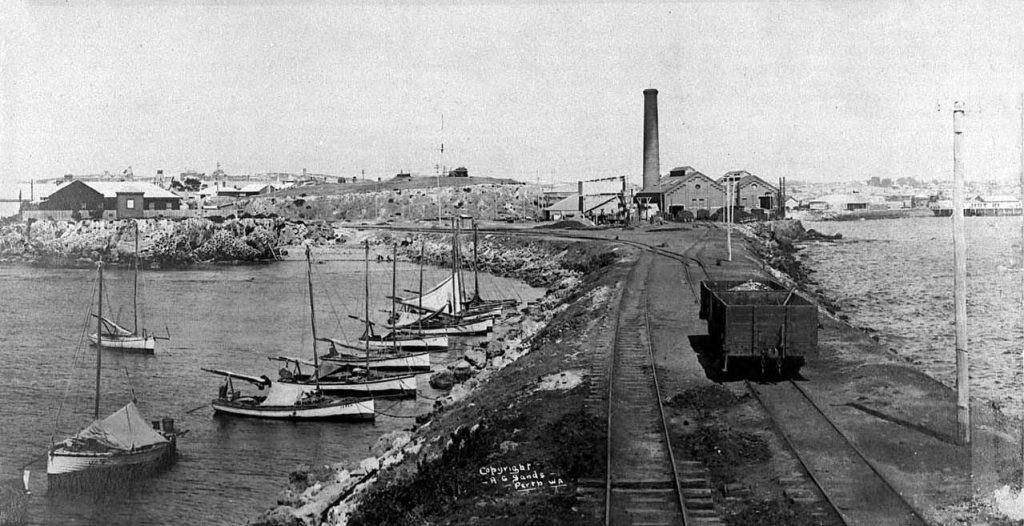Nestled at the mouth of the Swan River, Fremantle is one of Western Australia’s most historically significant cities.
With a past that stretches back tens of thousands of years, Fremantle has evolved from an important Noongar meeting place to a bustling colonial port and, today, a vibrant cultural hub with a focus on the arts. While we can’t cover Fremantle’s entire fascinating history, here’s a quick glance.
The Noongar connection.
Long before European settlement, Fremantle was home to the Whadjuk people of the Noongar Nation. The area, known as Walyalup, was a significant gathering place where Noongar people hunted, fished, and engaged in cultural and spiritual practices.
Their deep connection to the land and the river remains an essential part of Fremantle’s identity, with efforts to recognise and honour Noongar heritage continuing today.
European Settlement & the Swan River Colony.
Fremantle’s European history began in 1829 when Captain Charles Fremantle claimed the land for the British Crown, marking the establishment of the Swan River Colony. The town quickly developed into a key port, serving as the main gateway for supplies and settlers arriving in Western Australia.

photo credit: Panoramic view of the mouth of Fremantle harbour, G. Sands, A., c1913., City of Fremantle History Centre, LH001694D
Fremantle Prison.
Famously, Fremantle Prison was constructed in the 1850s using convict labour. This signalled a new phase in the colony’s development. The prison, which operated for nearly 140 years, is now a UNESCO World Heritage-listed site and remains one of the city’s most prominent historical landmarks. With a rich history, it’s still available for tours, regularly hosts events, and is a hot-spot for school excursions.
A bustling port town.
By the late 19th and early 20th centuries, Fremantle had grown into a thriving port town, playing a crucial role in Western Australia’s economy. The discovery of gold in the 1890s brought an influx of wealth and people, leading to the construction of many grand heritage buildings that still define the cityscape today.
Expansions under Charles Yelverton O’Connor.
Fremantle’s port underwent significant expansion under the direction of C.Y. O’Connor — and Irish-born engineer. He was appointed as the colony’s first Engineer-in-Chief in 1891 and was responsible deepening of the harbour, transforming Fremantle into a major international shipping hub. This development helped the city flourish even more, making it a vital connection between Western Australia and the rest of the world.
War & industry
During both World Wars, Fremantle played a strategic role as a naval base and submarine station, particularly during World War II when it became a crucial outpost for Allied forces. The port’s importance in defence, trade, and industry helped shape its character as a resilient and industrious city.
After the war, Fremantle continued to be a centre of trade and immigration, with a strong Italian and Greek influence that contributed to its unique cultural identity.
Fremantle’s cultural renaissance.
By the late 20th century, Fremantle had cemented its reputation as a city of arts, culture, and alternative lifestyles. The 1987 America’s Cup, hosted off the coast of Fremantle, was a turning point that spurred urban revitalisation, leading to the exciting restoration of many heritage buildings and the growth of the tourism and hospitality industries.
Today, Fremantle is known for its lively markets, eclectic street art, and strong maritime heritage. The city is home to the Fremantle Arts Centre, the Western Australian Maritime Museum, and the famous Cappuccino Strip, where visitors can soak in the relaxed yet vibrant atmosphere. With a large grassed area, skate park, and play ground, Fremantle is also a popular place for families to relax.
Preserving the past, embracing the future.
While Fremantle has embraced modernity, it remains deeply connected to its past. From the stories of the Whadjuk Noongar people to the colonial architecture and the bustling port, Fremantle’s history is a fascinating blend of Indigenous heritage, maritime industry, and cultural creativity.

